
Score breakdown
Things we like
- The most car-like ute to drive
- Strong four-cylinder and great V6 engine
- Brilliant for towing
- Excellent safety credentials
Not so much
- Relatively thirsty
- Relatively expensive
- Rear-seat space nothing special
The Ford Ranger is quite the remarkable success story in Australia, its popularity more than compensating for this country’s strange apathy towards the Blue Oval’s passenger cars and SUVs.
And the most popular variant is the Ranger XLT that we’re testing here in latest-generation form.
It has plenty to live up to considering we rated the previous XLT as our favourite dual-cab ute of 2021.

JUMP AHEAD
- How much is it, and what do you get?
- How do rivals compare on value?
- Interior, comfort, space and storage
- What’s the payload and is the tray practical?
- What is it like to drive?
- How is it on fuel?
- Is it good for towing?
- How safe is it?
- Warranty and running costs
- VERDICT
- Specifications
How much is it, and what do you get?
The XLT sits in the middle of a big Ford Ranger pack, positioned above XL and XLS variants and below Sport, Wildtrak and Raptor models.
Buyers can opt for a 4x2 Hi-Rider Double Cab Pick-Up that kicks off the XLT line-up from $54,790 before on-road costs
All other XLTs are four-wheel drive, including the four-cylinder-only Super Cab Pick-Up variant. Two other Double Cab Pick-Up XLT variants offer a choice of four-cylinder (our test vehicle) or V6 power while the Double Cab Chassis is V6-only.
The 4x4 XLT Double Cab Pick-Up with four-cylinder engine costs from $61,990 before on-road costs. Driveaway pricing is currently about $68,000, varying slightly by state.
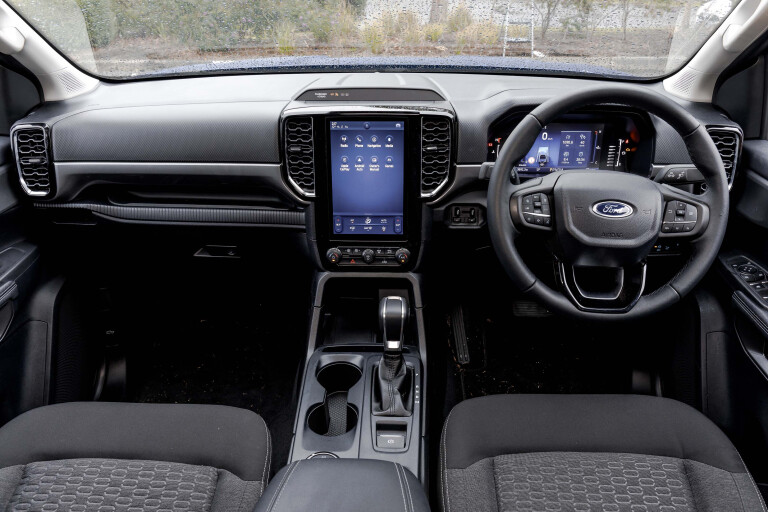
A $3000 premium is charged for the V6, which seems good value considering you not only get more power and torque but also full-time four-wheel drive rather than a selectable part-time 4x4 system.
Only a few options – including all exterior colours except white and a $900 Touring pack that adds a handy integrated trailing brake controller for towing – are included in Ford’s online Build & Price configurator.
However, Ford has teamed up with renowned accessories company ARB to create a vast range of official factory-backed add-ons for the Ranger.
The Ranger XLT’s standard equipment brings a whole host of extras over the XLS. Key features for the cabin include dual-zone climate control, keyless entry, auto-dimming rearview mirror, leather steering wheel, and integrated navigation plus DAB+ digital radio.
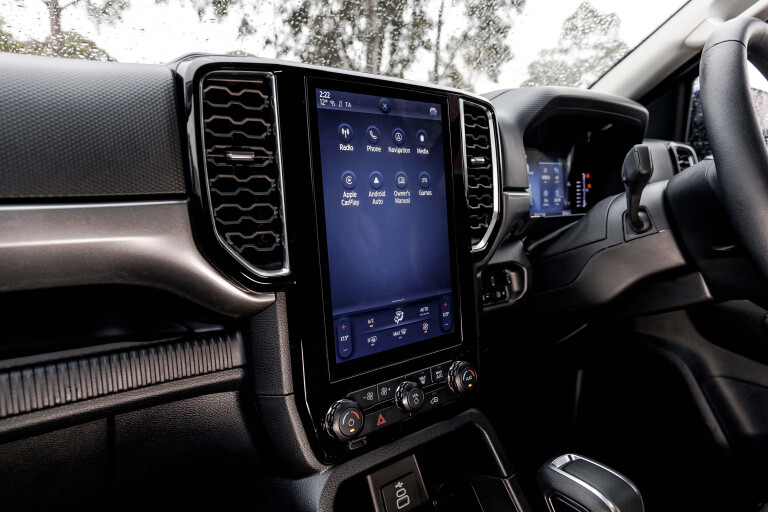
Exterior additions include a tow bar, LED headlights, 17-inch alloy wheels (up from the XLS’s 16s), a black sports bar and a tray featuring bedliner, 12V socket, and illumination.
If you can stretch an extra $2500 – and are interested in more features rather than more power (from the optional V6) – the Ranger Sport (four-cylinder) throws in LED foglights, skidplate, 18-inch alloy wheels, off-road screen (for the infotainment display), wireless phone charging and electric driver’s seat adjustment.
Upgrade your Ranger
How do rivals compare on value?
The Ford Ranger certainly doesn’t achieve popularity from cheap pricing; quite the opposite. The XLT, for example, is the most expensive dual-cab ute in its competitor set.
You’ll find similar variants of the Isuzu D-Max, Mazda BT-50, Mitsubishi Triton, Nissan Navara, and Toyota HiLux priced between $55,000 and $60,000. However, the Ranger can’t be described as poor value considering its extensive list of standard features.
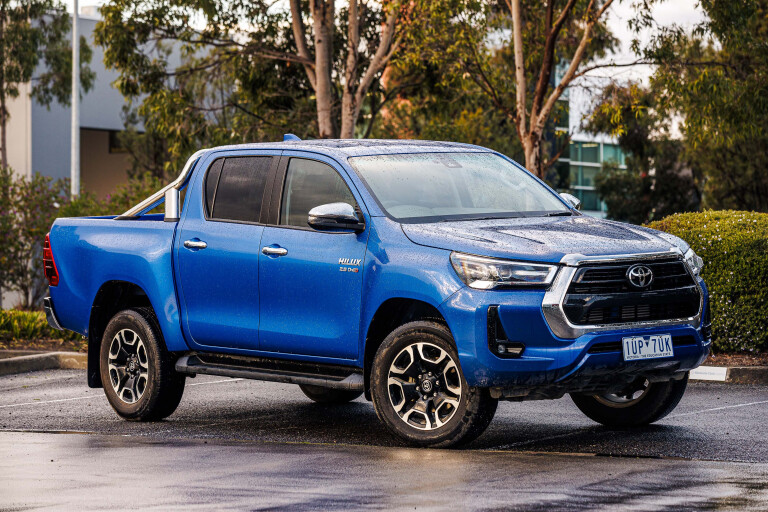
Interior comfort, space and storage
The Ford Ranger is the first one-tonne ute to introduce a large central touchscreen in portrait orientation (following the likes of Tesla and Volvo). Its 10.1-inch screen size is also class-leading.
Ford's new Sync4A operating system is slick, intuitive, and needs just four seconds to boot up to fully functional after the vehicle is switched on.
While navigating the system isn’t exactly the same as a smartphone, there are some similar pinch and swipe controls, and the various features and applications are easy to find and use, including a sketching ‘game’.
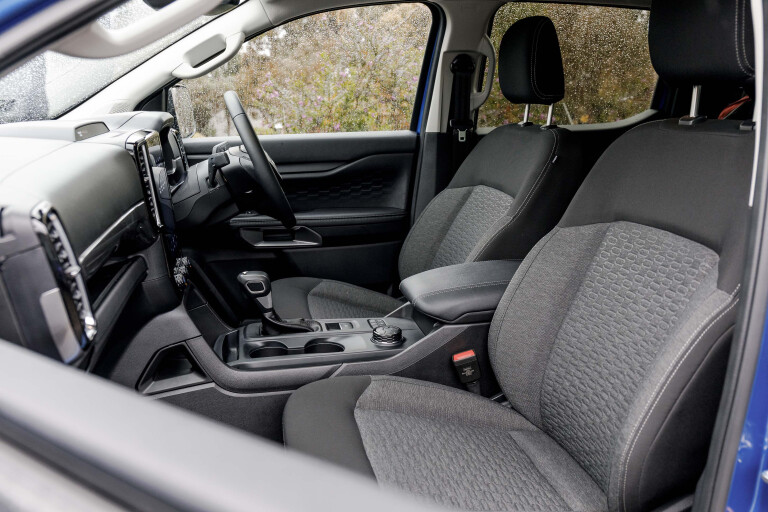
A digital driver's display completes a sophisticated dash that stands out in the segment.
Hard/durable cabin plastics are still common, though there are softer parts for key touchpoints such as the door armrest and centre armrest, and there’s an array of interesting textures and patterns.
The XLT’s cloth seats are manually adjusted (whereas some cheaper utes come with electrically adjustable front seats) and could do with extra lateral support, but they are comfortable, with good contouring for the back.
Lots of storage options are provided throughout the well-thought-out cabin, including a dash shelf for the front passenger, generous door pockets with big bottle holders and lots of central storage cubbies thanks to an electric park brake which occupies less space than a conventional lever.

If you’re wondering what each compartment is for, Ford has even provided little cartoon images inside each as a suggestion (including one for a packet of French fries).
The front row isn’t the most spacious in the class but still offers 70mm of headroom above a 188cm driver despite a strange bulge intruding into the roof space. The two-way steering wheel adjustment also has lots of range.
It’s not such a good story in the second row, where space is more limited. The transmission tunnel intrudes into useable floor space, there’s no room for a passenger’s toes under the front seat and knee room is a relatively short 30mm.
The second row has a folding armrest and room for three people. As a final indication of the modernity of the Ranger, it includes a USB-C charging socket for the front occupants alongside a more traditional USB-A port and there’s a 12-volt socket for the rear seat area as well as a second in the central storage bin.

What’s the payload and is the tray practical?
The Ranger can now swallow a Euro pallet (1200mm) between the rear wheelarches, while external tie-down rails and six tie-down points (the most available among its key rivals) will prevent gear from rattling around on corrugated tracks (the high-spec Wildtrak model features an internal rail with adjustable cleats to modulate tie-down locations, similar to the Navara's Utili-Track).
Another clever and useful inclusion is steps built into either side of the tray, complementing the rear step. The spray-in bedliner is also kind on your knees.

The spring-loaded and damped tailgate is the easiest to use in the segment –although others are catching up – enabling it to be opened and closed with one hand. There are also novel features such as the clamping pockets and a ruler with 10mm increments that can transform the tailgate into a workbench.
Another rare feature in the Ranger's tray is a 240-volt power outlet and LED lighting.
Tray capacity is 1233 litres and the four-cylinder XLT’s payload capacity is 959kg.

What is it like to drive?
The previous Ford Ranger was a benchmark on the road, and the local engineers thankfully didn’t drop the ball for the latest-generation model.
Ford’s Australian engineering team, in fact, has evolved the Ranger’s ride and handling to a point where the ute is better to drive on the road than many SUVs we could mention.
Steering remains a Ranger stand-out. Although there are about 3.2 turns lock to lock, the steering is relatively direct – with less arm twirling required for tighter turns compared with most of its peers. There’s also a precision and just-right heft that isn’t matched by any current rival.

The Ranger can’t quite compensate those who still lament the passing of sporty Falcon utes, but it is impressively composed through corners – offering something for both keen drivers and those who simply want reassuring roadholding from their dual-cab.
A superb electronic stability control system helps keep the Ranger in check on slippery roads.
There’s a firmness to the XLT’s unladen ride, which is particularly noticeable at lower speeds, though crucially the Ranger’s suspension avoids the jiggly characteristics so common to the segment.
Cabin calm is further boosted by low levels of tyre, wind and engine noise.

The four-cylinder may be relatively quiet but it’s also plenty muscular, producing maximum torque of 500Nm between 1750 and 2000rpm. The 10-speed auto has been revised (with a new torque converter) to reduce its previous tendency to hunt for gears; if still not perfect, the transmission is less busy in the new Ranger.
Performance is relatively brisk, too. We achieved 9.2 seconds in a 0-100km/h test, making the 154kW four-cylinder Ranger one of the fastest-accelerating vehicles in the class.
Wipe a whole second off that sprint time if you choose the V6, which in addition to developing an extra 30kW, has 600Nm cranking in a slightly wider band – 1750-2250rpm.
The six-cylinder gels even more sweetly with the 10-speed auto, and powers all four wheels variably and permanently whereas four-cylinder Rangers make do with a more conventional part-time four-wheel-drive system. This requires manual shuffling between rear-wheel drive (for on-road driving) and High/Low 4WD (for lower-grip surfaces), though this can be performed on the fly.

How is it on fuel?
Official, lab-derived consumption figures for the Ford Ranger are 7.2 litres per 100km for the four-cylinder and 8.4L/100km for the V6.
Expect higher figures in the real world. In our 2022 Dual Cab Megatest, Ford’s ute was the thirstiest of all vehicles in the segment.
The four-cylinder XLT returned an average of 11.3L/100km over a 215km drive. The V6 used some extra fuel, though its 11.8L/100km result was a smaller margin than the 1.2L/100km suggested by ADR81 figures.

Is it good for towing?
The Ranger’s braked towing capacity is 3500kg regardless of whether you choose the bi-turbo four-cylinder or V6.
However, a V6 Ranger offers the benefits of stronger performance and better refinement, as well as permanent four-wheel-drive capability, which delivers benefits on wet and varied roads when towing.
You also miss some of the driving modes, though the Tow-Haul setting is still there.
The electronic towing aids and on-screen guides are also there when you have the optional Touring Pack fitted, as our Ranger XLT did.

We tested with a Jayco caravan on the back of both our XLT four-cylinder and a Ranger Sport V6 and found a similar experience from the chassis. It’s stable and controlled and gives the driver confidence in the ute’s abilities.
The four-cylinder can be heard working hard on longer hill climbs and you generally need to work the accelerator pedal a touch harder to get the most out of the smaller engine.
It’s inevitably thirstier than the V6 as a result, though our results of 17.3L/100km and 16.7L/100km are unlikely to sway a buyer one way or the other.
The new Rangers prove not only to be competent and relaxed towing vehicles but, with the new technologies and features included, they make towing easier and safer.

How safe is it?
Independent crash-test body ANCAP awarded the Ranger its maximum five-star rating.
While it shares that result with almost all dual-cab utes, the Ford scored particularly well for child occupant protection and safety assist technology.
The Ranger has more airbags than any other ute for protecting its occupants, and there are three-point seatbelts in all seating positions and childproof door locks.
Driver aids include intelligent adaptive cruise control, blind-spot monitoring with cross-traffic alert and trailer coverage, speed limit notification, lane-keep assist with road edge detection and driver alert, and pre-collision assist with autonomous emergency braking (AEB).
The XLT has parking sensors front and rear, an integrated digital rear-view camera, and a 360-degree camera.

Warranty and running costs
Ford lists service intervals for its new Ranger at every 12 months or 15,000km, whichever comes first.
Capped-price servicing of just $329 is eligible for the first four general services, covering up to four years (or 60,000km), for MY22 Ford Rangers.
The Ranger is backed by a five-year, unlimited-kilometre warranty.
VERDICT
The Ford Ranger is a stand-out vehicle in the dual-cab-ute segment, with fuel efficiency one of the rare areas where it’s inferior to rivals.
Volkswagen’s second-generation Amarok, due in April and related to the Ranger, might alter the picture but the German ute is also likely to be dearer.
The XLT trim grade remains easy to recommend, too. We’d also suggest opting for the V6 over the four-cylinder engine as it delivers plenty for a relatively small premium.

Score breakdown
Things we like
- The most car-like ute to drive
- Strong four-cylinder and great V6 engine
- Brilliant for towing
- Excellent safety credentials
Not so much
- Relatively thirsty
- Relatively expensive
- Rear-seat space nothing special









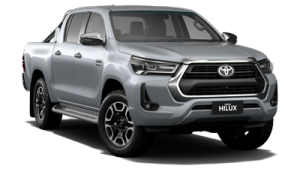
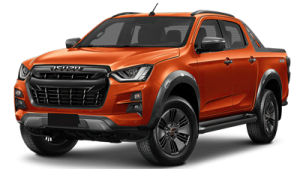

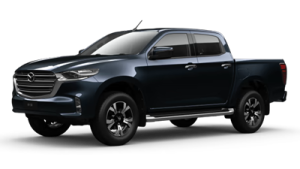

COMMENTS